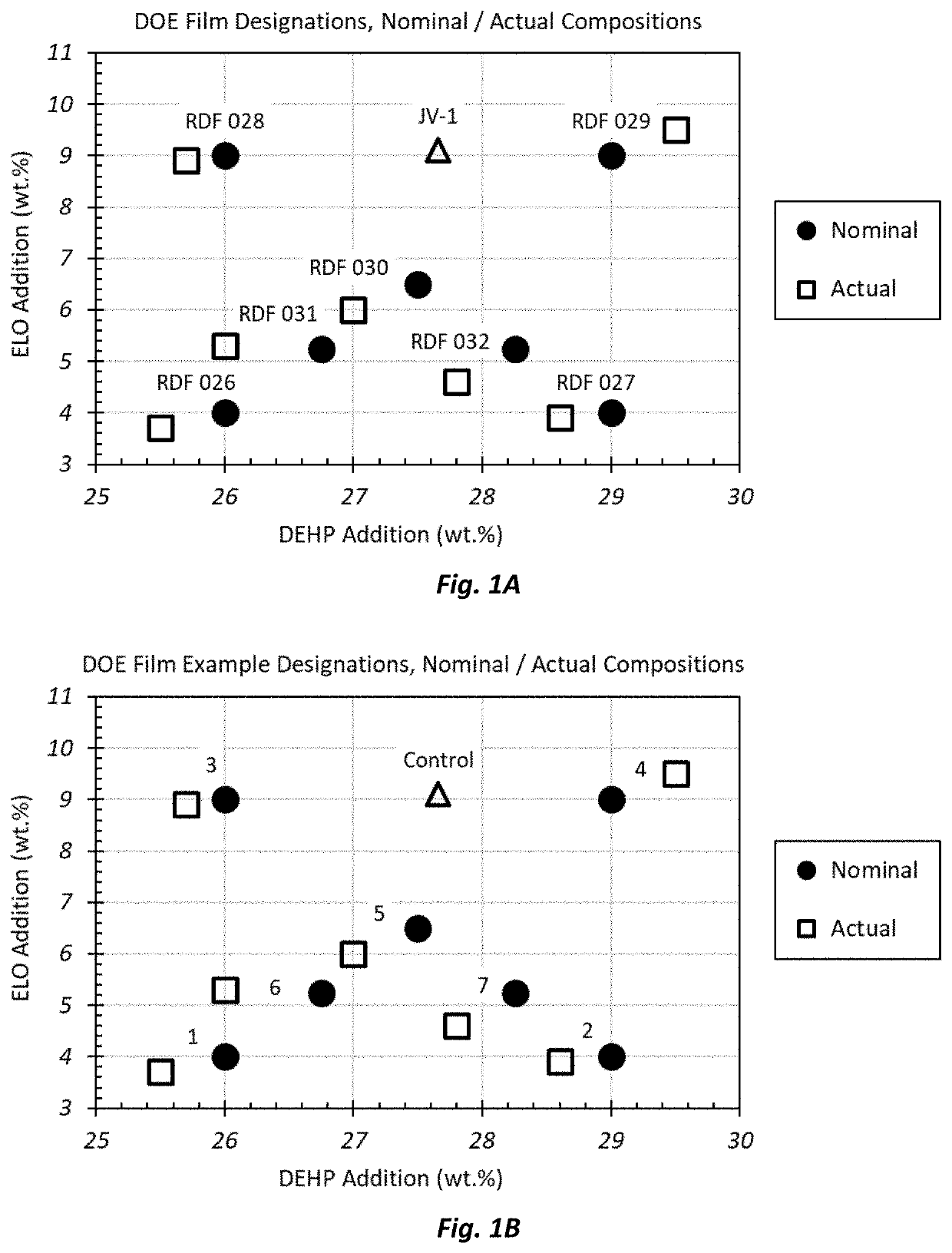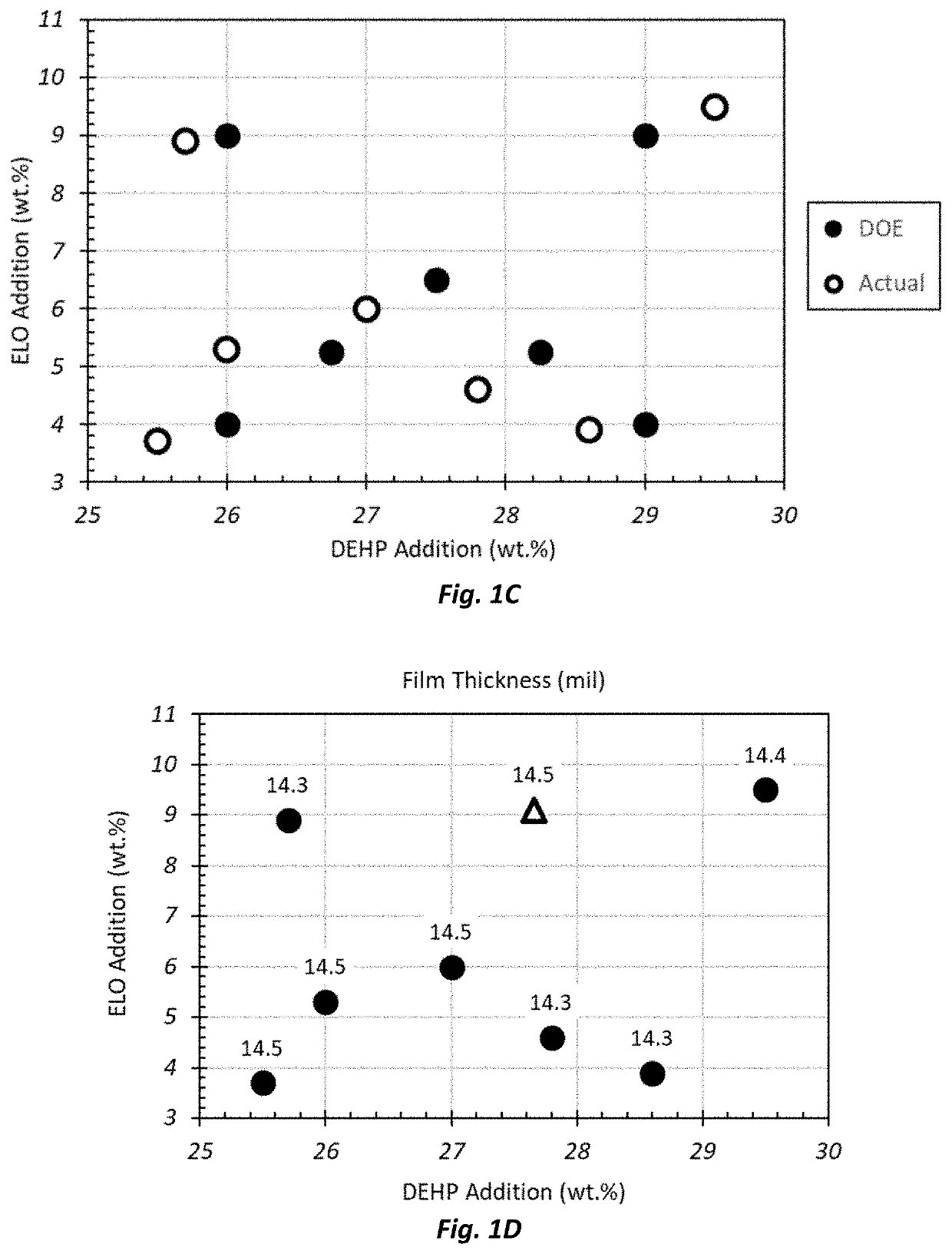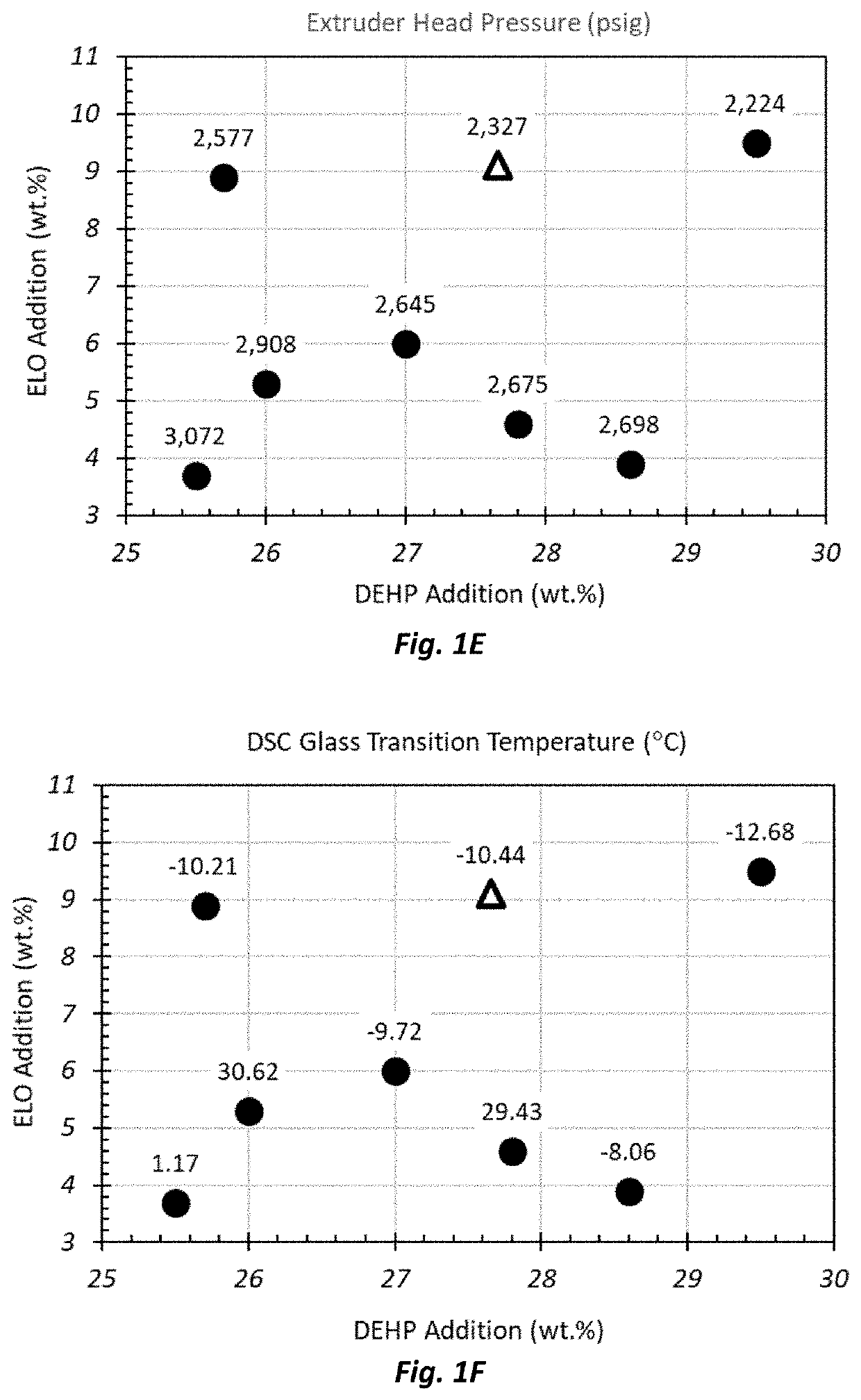Compositions and devices for containing medical fluids
a technology of composition and device, applied in the field of polymer formulation, can solve the problems of complicated choice of formulation constituents, increased production costs, and increased production costs, and achieve the effects of improving optical, material properties, and/or stability
- Summary
- Abstract
- Description
- Claims
- Application Information
AI Technical Summary
Benefits of technology
Problems solved by technology
Method used
Image
Examples
example 1
aration
[0174]Flexible PVC films of various compositions comprising 2-diethylhexyl phthalate (DEHP), epoxidized linseed oil (ELO), and an optical enhancer were prepared and extruded.
Experiment Design
[0175]A 2×2 full factorial experiment design (DOE) was run varying DEHP and ELO at nominal loadings of 26.0 wt. % and 29.0 wt. %, and 4.0 wt. % and 9.0 wt. %, respectively, in addition to a midpoint composition, and two additional lower quadrant midpoint compositions. Two-dimensional composition space plots were used to visualize the data and to infer directionality and magnitude of compositional impact on each of the film properties and attributes within the defined composition space. As indicated in Table 1, the actual composition space is broadened relative to the nominal DOE composition space, as shown in FIG. 1A. Property values are plotted in the actual composition space to provide a true representation of trends with DEHP and ELO concentration changes.
[0176]As shown in Table 1 and ...
example 2
acterization
[0187]The flexible PVC films extruded in Example 1 were tested to evaluate film processing, mechanical properties, appearance and color stability with respect to post-sterilization film brightness and color stability relative to the Yellowness Index (D65, 10°) defined for the CIE XYZ color space.
Measurement of PVC Glass Transition Temperature Using Differential Scanning Calorimetry
[0188]The glass transition temperature of extruded PVC film samples for the seven DOE and Control films was measured using differential scanning calorimetry (DSC). Briefly, a 5-10 mg sample of polymer was sliced from the extruded film and placed into a standard aluminum DSC pan and crimped. An identical empty, covered aluminum pan was used as a reference. Both pans were placed into the autosampler unit of a TA Instruments DSC 2500 Differential Scanning Calorimeter. The unit was programmed to equilibrate the sample at −50° C., and ramp sample and reference pans at 10° C. / min to 195° C. to comple...
example 3
Optical Enhancer Addition on Film CIELAB Yellowness (b*) and Redness (a*
[0212]Cast film extrusion of nominal 14-mil flexible PVC films using the R&D extrusion line was performed in order to determine the influence of optical enhancer (e.g., optical brightener (OB)) loading on select film properties including color, yellowness, blocking (tackiness), heat stability, and aging after sterilization. The control base formulation (0 ppm OB) was utilized to produce OB loadings of 0, 25, 50, 75, and 150 ppm using an OB masterbatch containing 3,750 ppm. Extrusion was performed with a screw speed of 100 rpm, a line speed of 31 ft / min, and with the top and middle chill rolls set at 240° F. and 210° F., respectively. The CIELAB color vector was characterized for the “as-produced”, sterilized films and the D65 / 10° yellowness index was computed in accordance with ASTM E313. The yellowness index decreased (shifted to bluer shades) with increasing OB content. Without OB, the control film exhibits a ...
PUM
| Property | Measurement | Unit |
|---|---|---|
| weight percent | aaaaa | aaaaa |
| weight percent | aaaaa | aaaaa |
| weight percent | aaaaa | aaaaa |
Abstract
Description
Claims
Application Information
 Login to View More
Login to View More - R&D
- Intellectual Property
- Life Sciences
- Materials
- Tech Scout
- Unparalleled Data Quality
- Higher Quality Content
- 60% Fewer Hallucinations
Browse by: Latest US Patents, China's latest patents, Technical Efficacy Thesaurus, Application Domain, Technology Topic, Popular Technical Reports.
© 2025 PatSnap. All rights reserved.Legal|Privacy policy|Modern Slavery Act Transparency Statement|Sitemap|About US| Contact US: help@patsnap.com



